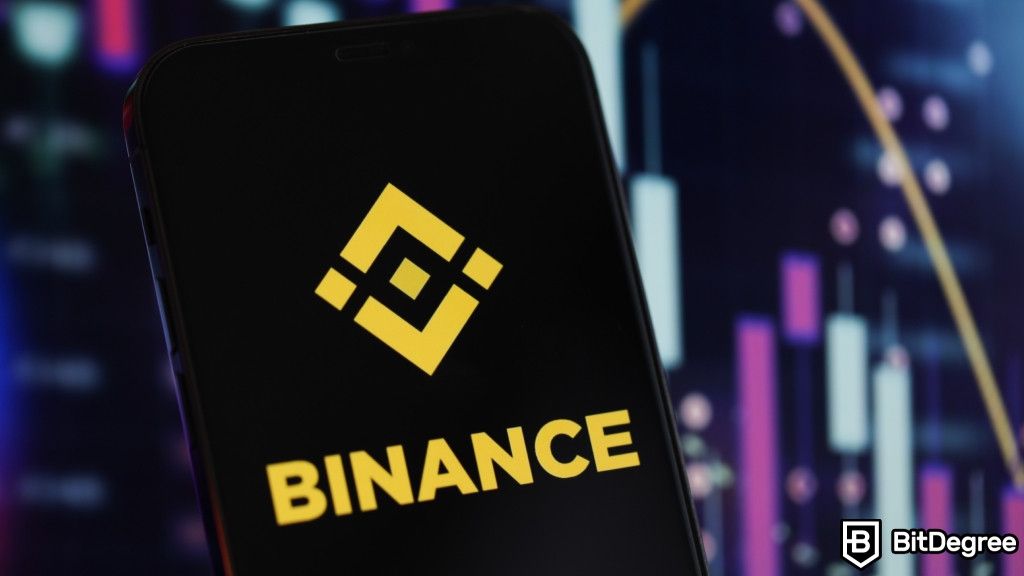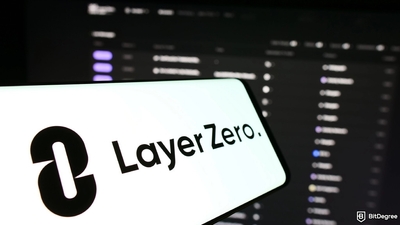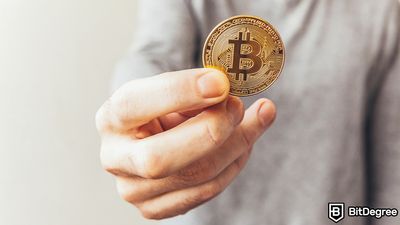Key Takeaways
- Binance Futures employs a maker-taker fee model, with fees varying based on the trader's VIP level and trading volume. Higher trading volumes and BNB balances typically result in lower Binance Futures fees;
- The platform offers different types of futures contracts, including perpetual and traditional futures, each with its own fee structure;
- Many countries and regions, including the United States, Europe, Japan, and others, are on the Binance Futures restricted countries list.
Free Airdrop Season 7 is LIVE! Answer fun questions or do simple tasks to earn rewards from the $30K BitDegree prize pool. Participate Now ! 🔥
Navigating the complex world of cryptocurrency trading can be daunting, especially when it comes to understanding the intricacies of futures trading fees. Among the leading platforms, Binance stands out for its extensive futures trading options. However, Binance Futures fees, while competitive, require a clear understanding to maximize trading efficiency.
Why such a strong focus on the fees? Well, because understanding futures fees will help you trade more effectively and efficiently. So, in this Binance Futures review, I'll explore its fees, types of contracts, how to trade futures on Binance, and more.

Did you know?
Subscribe - We publish new crypto explainer videos every week!
Hot VS Cold Wallet: Which One Do YOU Need? (Animated)


Table of Contents
- 1. Understanding Binance Futures Trading
- 1.1. Binance Futures Fees
- 2. Exploring Binance Futures Data and Signals
- 3. What is Binance Futures NEXT?
- 4. Binance Futures Restricted Countries and Considerations
- 5. How to Trade Futures on Binance?
- 5.1. How to Open a Binance Futures Account?
- 5.2. How to Fund Your Binance Futures Wallet?
- 5.3. How to Make a Futures Trade?
- 6. Conclusions
Understanding Binance Futures Trading
Futures trading has emerged as a pivotal tool for traders looking to leverage market movements. At the heart of this trading landscape is Binance, a leading cryptocurrency exchange platform, renowned for its futures trading tool. Though, futures trading sounds a bit scary, right? Don't worry, it's actually not, and I'm here to give you a short "Binance Futures trading for beginners" guide.
Latest Deal Active Right Now:Head to BitDegree Missions, gather as many Bits as possible & claim your stake of the $30,000 Prize Pool! Don't waste your time & start collecting Bits by completing Missions and referring friends.
So, futures trading, fundamentally, allows traders to speculate on the future price of cryptocurrencies. It involves the agreement to buy or sell a particular asset at a predetermined price at a specific time in the future. This method of trading enables traders to hedge against market volatility, which is a common attribute of the crypto market[1].
The advantages of futures trading are manifold. For one, it offers traders the ability to leverage, meaning they can open positions much larger than their account balance, potentially leading to higher profits.
Futures trading also provides the flexibility to profit from both rising and falling markets, as traders can take both long (buy) and short (sell) positions. Additionally, it allows for risk management through hedging[2], where traders can offset potential losses in their spot market positions.

However, with these advantages come significant risks. Leverage can amplify losses just as it can amplify gains. The volatile nature of cryptocurrencies means prices can fluctuate wildly, leading to substantial gains or losses in a short period. Moreover, futures trading requires a good understanding of the market and trading strategies. Inexperienced traders can find themselves facing rapid losses, especially in a highly leveraged position.
Binance Futures offers several types of contracts to cater to traders' diverse needs. The most prominent among these are COIN-Margined (COIN-M) and USD-Margined (USD-M) contracts.
COIN-M contracts are settled and collateralized in the underlying cryptocurrency, and they are best for long-term investors. USD-Margined contracts, on the other hand, are settled in stablecoins like USDT or USDC. They offer versatility and easier calculation of returns, attracting traders seeking short-term opportunities. Both types cater to different risk appetites and trading preferences.
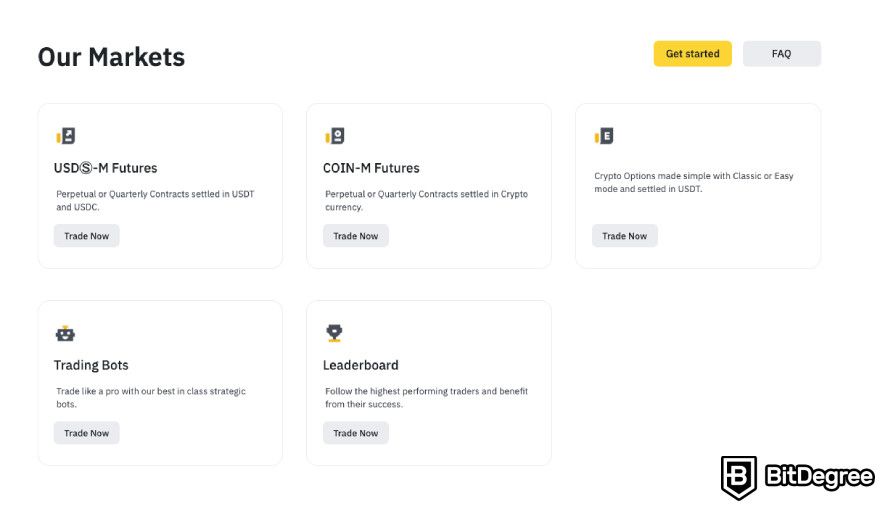
Each type of contract has its own fee structure, too, which is an important consideration for traders. Binance Futures fees are competitive and are designed to encourage liquidity in the market. The fees are typically a small percentage of the contract's value and vary based on factors such as the trader's VIP level and whether the trader is providing liquidity or removing liquidity.
Though, Binance Futures, as a platform, is a derivatives trading platform. So, note that, apart from futures contracts, it also provides options contracts. While futures contracts oblige traders to buy or sell an asset at a predetermined future date and price, options contracts grant the right, without the obligation, to do so.
Overall, Binance Futures trading offers a dynamic and potentially lucrative avenue for cryptocurrency traders. The variety of contracts available, combined with competitive fees, makes Binance an attractive platform for traders.
However, it is crucial to understand the associated risks and to approach futures trading with a well-thought-out strategy and a clear understanding of the market dynamics. As with any form of trading, knowledge is the key to maximizing the potential benefits while minimizing risks.
Binance Futures Fees
Binance Futures fees are a crucial aspect to consider for anyone engaged in futures trading on the Binance platform. These fees significantly influence the overall trading experience, affecting the cost and potential profitability of trades.
Being a major player in the cryptocurrency market, Binance offers a comprehensive and competitive fee structure for its futures trading services. This structure is designed to accommodate traders of varying strategies, making it essential to understand the nuances of these fees.
The Binance Futures fee structure is primarily based on the maker-taker model. A maker is a trader who provides liquidity to the market by placing a limit order that is not immediately filled by an existing order. Makers add depth to the market and are usually offered a lower fee rate as their actions are beneficial for the market.
Conversely, a taker is a trader who removes liquidity from the market by placing an order that is immediately matched with an existing order. Takers are typically charged a higher fee as they are taking away liquidity.
Binance operates a tiered fee structure, where traders are categorized into different VIP levels based on their 30-day trading volume and Binance Coin (BNB) balance. Higher VIP levels benefit from lower trading fees, incentivizing increased trading activity and BNB holdings. Also, Binance Futures fees can differ based on the type of contract.
USDT-M, ETH/BTC, and COIN-M Futures fees are the following:
| VIP Level | Maker | Taker |
|---|---|---|
| Regular User | 0.02% | 0.05% |
| VIP 1 | 0.016% | 0.04% |
| VIP 2 | 0.014% | 0.035% |
| VIP 3 | 0.012% | 0.032% |
| VIP 4 | 0.01% | 0.03% |
| VIP 5 | 0.008% | 0.027% |
| VIP 6 | 0.006% | 0.025% |
| VIP 7 | 0.004% | 0.022% |
| VIP 8 | 0.002% | 0.02% |
| VIP 9 | 0% | 0.017% |
Table: USDT-M, ETH/BTC, and COIN-M Binance Futures fees.
However, USDC-M Futures fees are 10% smaller. So, maker fees start at 0.018% and go down to 0%, while taker fees start at 0.045% and go down to 0.0153%.
Besides, note that you can lower USDT-M, ETH/BTC, and USDC-M Futures fees by an additional 10% if you cover them using BNB. You cannot do that with COIN-M Futures fees, though.
In addition to trading fees, Binance Futures traders must also be aware of funding fees. These fees are exchanged between buyers and sellers every eight hours and are meant to ensure the perpetual contracts' price stays anchored to the underlying spot market price. The funding fee can be positive or negative, depending on the market position, and is paid or received by the trader depending on whether they are holding a long or short position.
Another fee to consider is the withdrawal fee, which is incurred when traders withdraw their profits or funds from the Binance platform. This fee varies depending on the cryptocurrency being withdrawn and the network conditions at the time of withdrawal. It's important for traders to be aware of these fees, as they can add up, especially for those who frequently move funds in and out of the exchange.
Understanding the complete Binance Futures trading fee structure, including maker and taker fees, tiered fee levels based on trading volume and BNB holdings, as well as funding and withdrawal fees, is crucial for traders on the Binance Futures platform. These fees can have a significant impact on trading strategy and profitability, especially for high-frequency traders or those trading with substantial volumes.
Exploring Binance Futures Data and Signals
Binance Futures fees are just one aspect of the trading experience on Binance Futures. Equally important is the array of data and signals available to traders, which can be leveraged to make informed trading decisions.
Among these resources, you can find Binance Futures signals and other comprehensive sets of data sources that provide unique insights into the market dynamics.
Market Data and Analysis Tools
The market data provided by Binance Futures includes current prices, bid/ask spreads, and trading volumes for each futures contract. Binance Futures data is crucial for traders to gauge market sentiment and liquidity, which are key indicators of market movement. High trading volumes, for instance, can signal a strong interest in a particular contract, while the bid/ask spread can indicate the liquidity and potential volatility of a contract.
Order Book and Trade History
The order book data shows the current buy and sell orders for each futures contract. This data is essential for understanding the depth of the market and the levels of support and resistance. It helps traders identify potential buy and sell points based on the concentration of orders at certain price levels. The trade history, which shows past trades for each contract, provides insights into the market's past performance and trends, aiding in predictive analysis.
Funding Rate Data
Funding rate data, unique to futures trading, shows the interest rate paid or received by traders. It is an important factor in maintaining the balance between long and short positions in the perpetual futures market.

Changes in the funding rate can indicate shifts in market sentiment, providing traders with cues about potential market movements.
Technical Indicators and Trading Signals
Binance Futures supports various technical indicators like moving averages, the Relative Strength Index (RSI), and Bollinger Bands. These indicators are used to smooth out price data, measure price momentum, and identify overbought or oversold conditions, respectively. Such tools are vital for traders to identify trends and make data-driven decisions.
Moreover, there are Binance Futures signals, like price breakouts, trading volume spikes, and funding rate changes. These signals can alert traders to emerging trading opportunities. For instance, a price breakout might indicate a strong market move beyond a resistance or support level, while a spike in trading volume could signal increased interest or activity in a particular contract.
Traders use this wealth of data to develop various trading strategies. Trend following strategies, for example, involve buying futures contracts in an uptrend and selling in a downtrend. Mean reversion strategies focus on buying below-average prices and selling above-average prices. Arbitrage strategies seek to exploit price differences across different exchanges or contracts.
Binance BTC Futures Signals and Data
The comprehensive set of data and signals provided by Binance is invaluable for traders engaged in Binance BTC Futures. These tools offer insights specifically tailored to Bitcoin's market dynamics, aiding traders in making informed decisions.
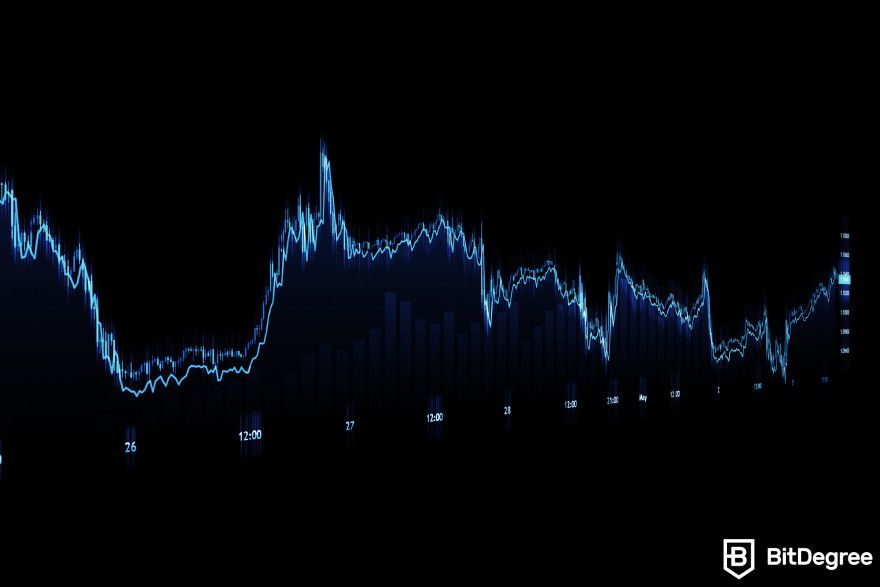
From understanding the implications of Bitcoin's volatility to utilizing the robust technical indicators, the data available for Binance BTC Futures traders is a cornerstone for developing effective trading strategies.
Binance Futures Calculator
If we're talking about Binance Futures trading for beginners, it's advisable to utilize tools like the Binance Futures calculator before initiating your first trade (of course, experienced traders can use it, too).
The Binance Futures calculator is beneficial for calculating estimated profits, losses, and the necessary margins for trades. It helps newcomers gain a clearer grasp of the financial elements involved in futures trading on Binance.
Overall, utilizing these resources effectively can empower traders to make more informed decisions, develop robust trading strategies, and navigate the complex world of cryptocurrency futures trading with greater confidence and success.
What is Binance Futures NEXT?
When exploring the Binance Futures platform, you might have noticed an interesting new feature - Futures NEXT. What is that, exactly? Well, it's a platform where users can try to predict which tokens will be listed next on the USD-M market. It's like making bets on upcoming token listings.

Users can buy Picks to make their predictions or nominate tokens they think should be listed. If your prediction is right, you can earn rewards, including vouchers for futures trading. The platform operates independently of Binance's listing process, so popularity within Futures NEXT doesn't guarantee a token will be listed.
You can withdraw your Picks if your prediction doesn't come true or change your mind. If you nominate a token and it gets approved, your nomination turns into Picks, which are locked for a while. However, if your token isn't listed, you get your money back. Overall, Futures NEXT is a way for users to engage with token listings and potentially earn rewards based on their predictions.
Binance Futures Restricted Countries and Considerations
Any comprehensive Binance Futures review must cover the geographic availability of these services, as Binance operates under diverse regulations globally. The varying legal landscapes in different countries impact the availability of Binance Futures, which is a significant consideration for traders who wish to access these services.
While there is no clear Binance Futures restricted countries list, if you are in one, you won't be allowed to open a futures account.
Nonetheless, note that Binance is not available in the United States, for example. Instead, there is a separate legal entity called Binance.US, which caters to local regulations. However, it does not offer many services, and it definitely doesn't offer futures trading.
Also, Binance has separate country-specific platforms like Binance Japan or Binance Australia. Sometimes these platforms provide all the same services, while other times, they don't due to that country's regulations. For example, the aforementioned Japanese and Australian platforms do not allow futures trading.
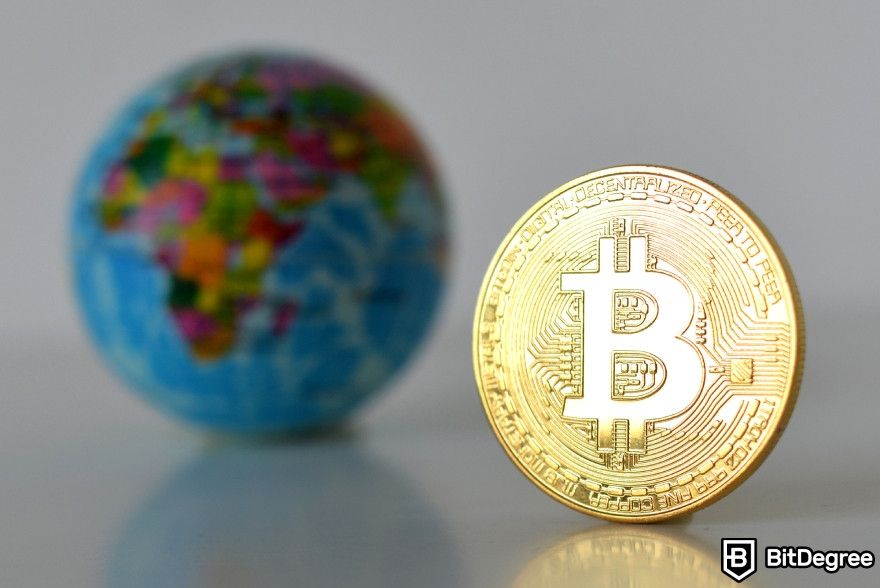
In addition to that, in 2021, Binance banned all derivatives trading products in Europe, including futures contracts.
Other Binance Futures restricted countries include Canada, Singapore, South Korea, Hong Kong, Turkey, Iran, Iraq, North Korea, Syria, Sudan, Venezuela, and Cuba. These restrictions can vary in severity, though, from complete bans to specific limitations on certain services.
The geographical restrictions have several implications for traders. This limitation can significantly impact their trading strategies, especially if they rely on futures trading as part of their portfolio. Secondly, for global traders who travel frequently, understanding these restrictions is crucial to ensure continuous compliance with local regulations.
Moreover, these restrictions highlight the importance of regulatory compliance in the cryptocurrency industry. As regulations evolve, exchanges like Binance must adapt their services to meet the legal requirements of different jurisdictions. This dynamic regulatory environment can lead to sudden changes in service availability, which traders need to be aware of.
How to Trade Futures on Binance?
Trading futures on Binance involves several steps, from setting up an account to understanding the trading interface and managing risks. Let's start with the basics, though: setting up a Binance Futures account.
How to Open a Binance Futures Account?
Step 1: Create a Binance account. If you already have one, you can skip to the next step. New users can sign up by visiting the Binance website and clicking the [Sign Up] button at the top right corner of the screen.
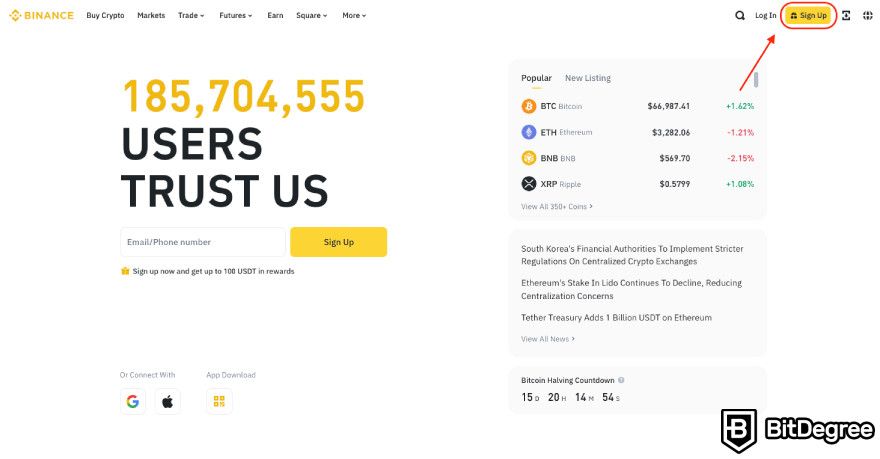
Step 2: Once you've signed in, you can open your Binance Futures account. To do that, click [Futures] and, once on Binance Futures' homepage, tap [Open Account].

Step 3: Verify your identity. Binance requires identity verification to unlock all features, so make sure you do that. Since my identity was already verified, I was taken straight to the Binance Futures trading interface.

Here, I had to read the Binance Futures Service Agreement and then click [Open Now].
Step 4: After clicking that, I had to choose my default leverage. If we're talking about Binance Futures trading for beginners, I suggest choosing the default 5x leverage.
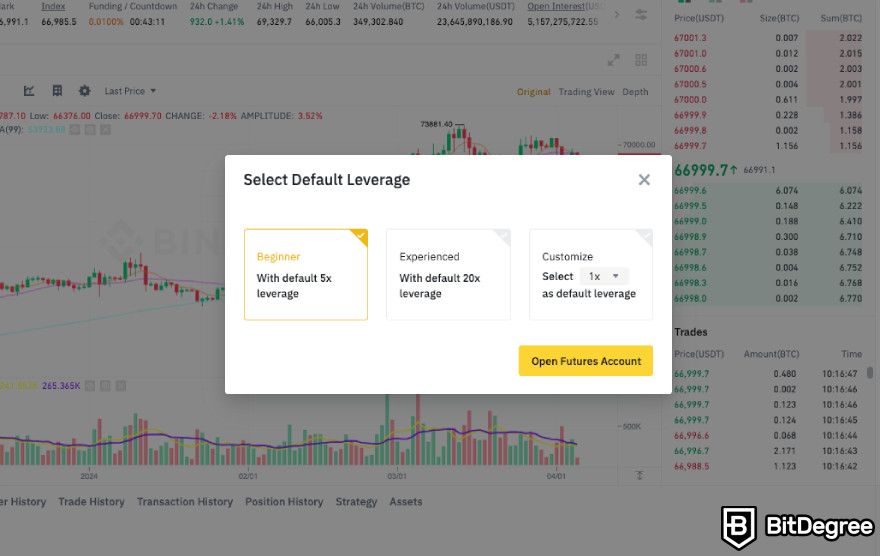
Then, to finalize the activation of your Binance Futures account, you also have to take a quiz. Click on [Take Quiz] and ensure that you answer all the questions correctly.
How to Fund Your Binance Futures Wallet?
Before you can start trading futures, you need to deposit either fiat or cryptocurrencies into your account or buy crypto using Binance's crypto on- / off-ramp. This step is crucial as it funds your Binance Futures wallet, enabling you to engage in futures trading.
Buying Crypto
Step 1: If you want to buy crypto, head to Binance and click [Buy Crypto] at the upper left corner of the webpage.
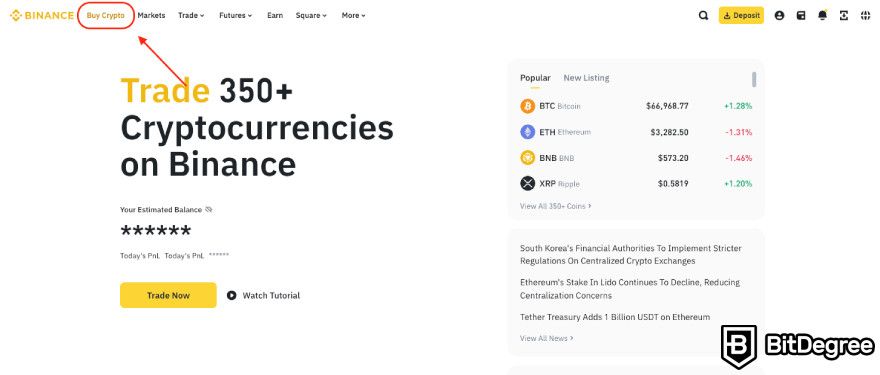
Step 2: Choose your preferred currency and payment method for the deposit, click [Continue], and complete the transaction.

Depositing Crypto
Step 1: To deposit cryptocurrencies, go to the homepage and click [Deposit], which is located at the top of the page.
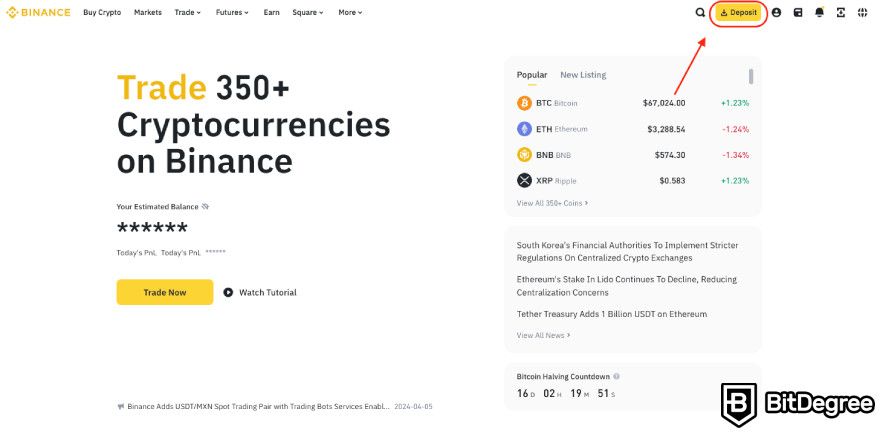
Step 2: Choose [Deposit Crypto].

Step 3: Choose the coin you want to deposit into your Binance account and pick your desired network from the available options. A deposit address will be generated.
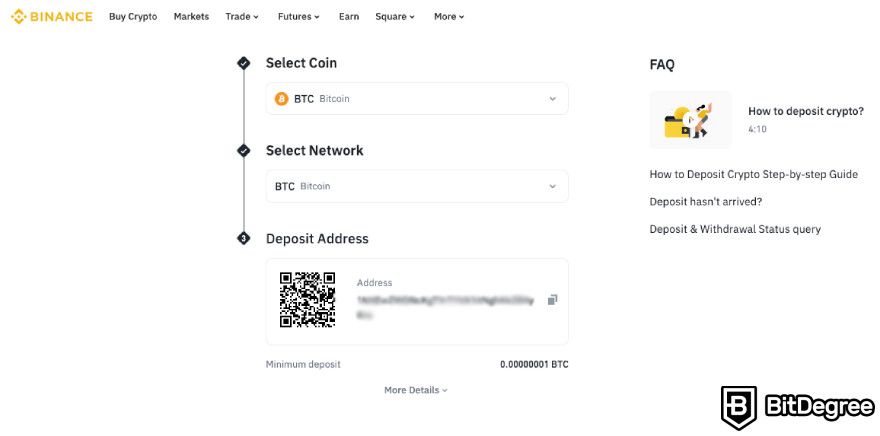
Now, all you have to do is copy the address and paste it into the wallet from which you want to withdraw crypto.
Transferring Funds to the Binance Futures Wallet
Step 1: To transfer funds to your Binance Futures wallet, go to your spot wallet again and then click [Transfer].
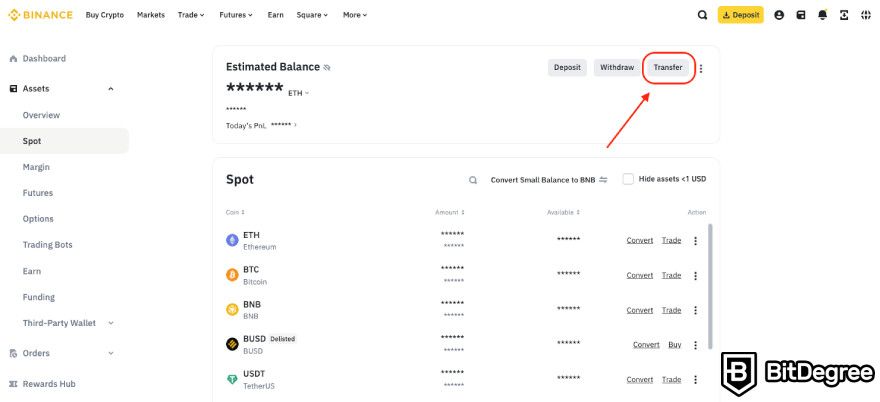
Step 2: Choose the coin you want to transfer, where you want to transfer it to (COIN-M or USD-M Futures wallet), input the amount you wish to move, and then click [Confirm].

That's it, you're funds will be transferred promptly.

- Secure and reliable
- Accepts fiat currencies
- Lots of trading options
- Reputable exchange
- Accepts fiat currencies
- Offers various trading options

- Fiat currencies - accepted
- Simple to use
- Accepts only the most trustworthy cryptocurrencies
- A leading cryptocurrency exchange platform
- Best for beginner investors
- Accepts fiat currencies

- Beginner-friendly
- Secure
- Decent trading and withdrawal fees
How to Make a Futures Trade?
With your account verified and your wallet funded, you're ready to make your first trade on Binance Futures. Remember that you can use various tools, like the Binance Futures calculator or Binance Futures signals, to help you make more informed decisions.
Step 1: To start trading futures on Binance, navigate to Binance Futures and select [USD-M] or [COIN-M], depending on the type of contract you're seeking.
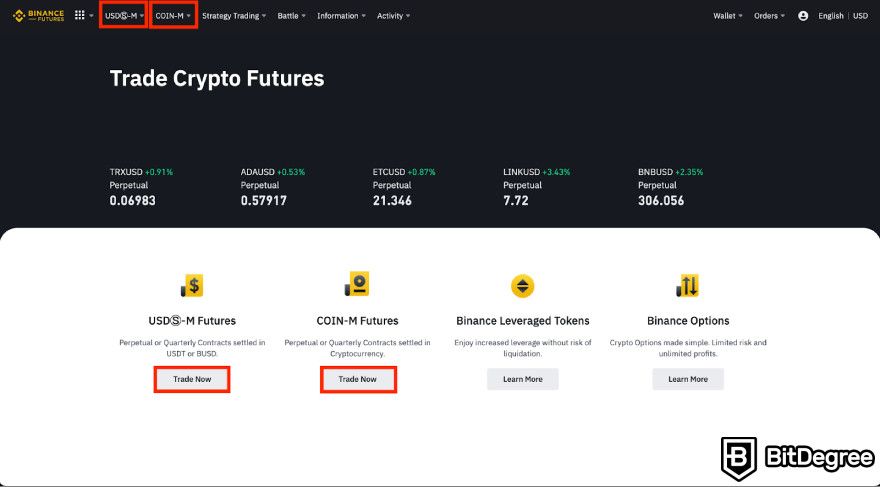
Step 2: Locate the futures contract you wish to trade at the top left of the page. The price chart can be used to pinpoint potential trading setups by observing patterns or using the technical indicators provided on Binance Futures.
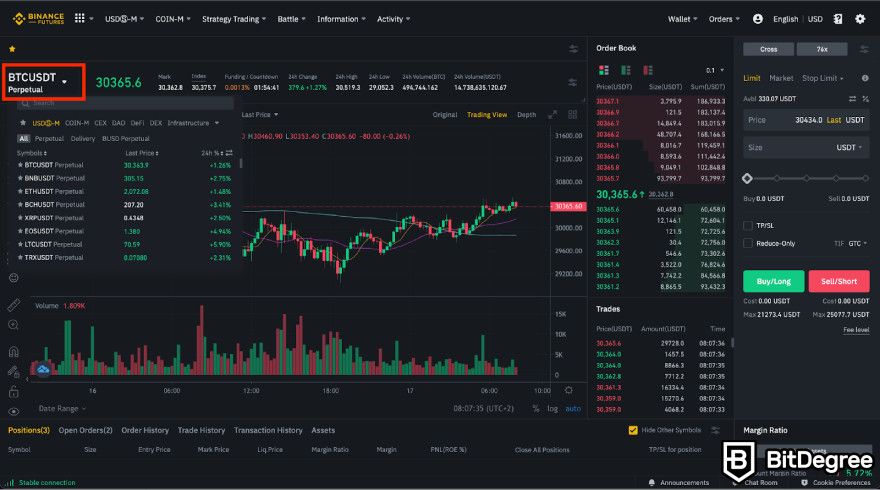
Step 3: Choose the margin mode for the specific futures contract you've selected. Decide between [Cross] and [Isolated], and then click [Confirm].

Step 4: Next, adjust the desired leverage for your contract and then click [Confirm]. Be aware that employing high leverage involves significant risks and should not be undertaken without a solid risk management strategy in place.
Step 5: Choose the order type, set the price and size of the trade, activate the TP/SL feature to set up your Take Profit and Stop Loss orders, and decide whether to go for a Buy/Long or Sell/Short position.
Once you sort these points out, just confirm your order, and you'll be all set!
Conclusions
To sum up this Binance Futures review, it's worth noting that Binance stands as a dominant force in the crypto futures market, offering a range of tools and features tailored for both novice and seasoned traders. Its competitive fee structure, diverse contract options, and robust trading interface set it apart.
Thus, traders who invest time in understanding how to trade futures on Binance, along with its fee structure and trading nuances, stand to gain a competitive edge in this fast-paced market, especially with tools like the Binance Futures calculator or various Binance Futures data at hand.
However, traders must remain vigilant about Binance Futures restricted countries, the risks associated with this type of trading, and the ever-changing regulatory landscape. Navigating these complexities requires a combination of market knowledge, strategic planning, and the right tools.
The content published on this website is not aimed to give any kind of financial, investment, trading, or any other form of advice. BitDegree.org does not endorse or suggest you to buy, sell or hold any kind of cryptocurrency. Before making financial investment decisions, do consult your financial advisor.
Scientific References
1. B. Goss, B. Yamey: 'Introduction: The Economics of Futures Trading';
2. F. Liu: 'Hedging Cryptos with Bitcoin Futures'.

